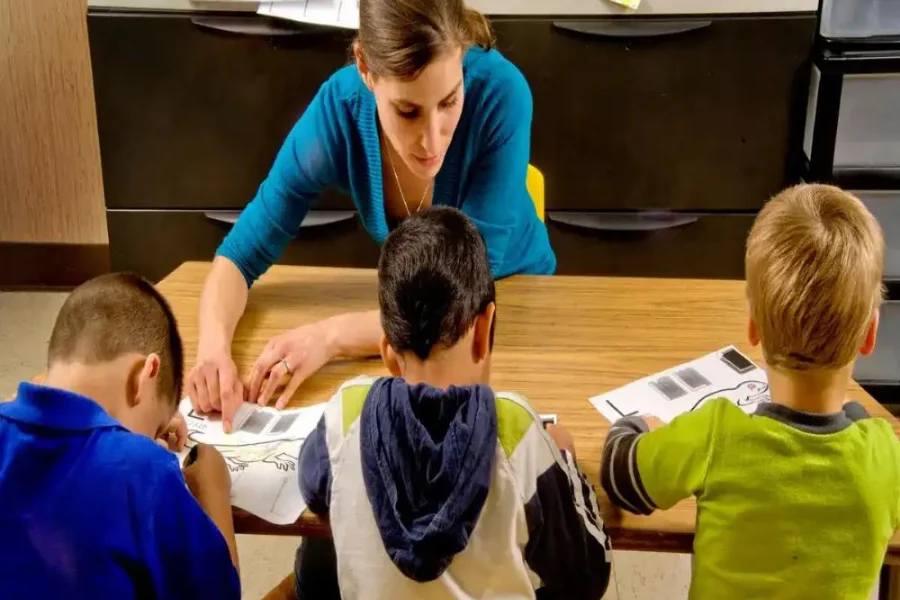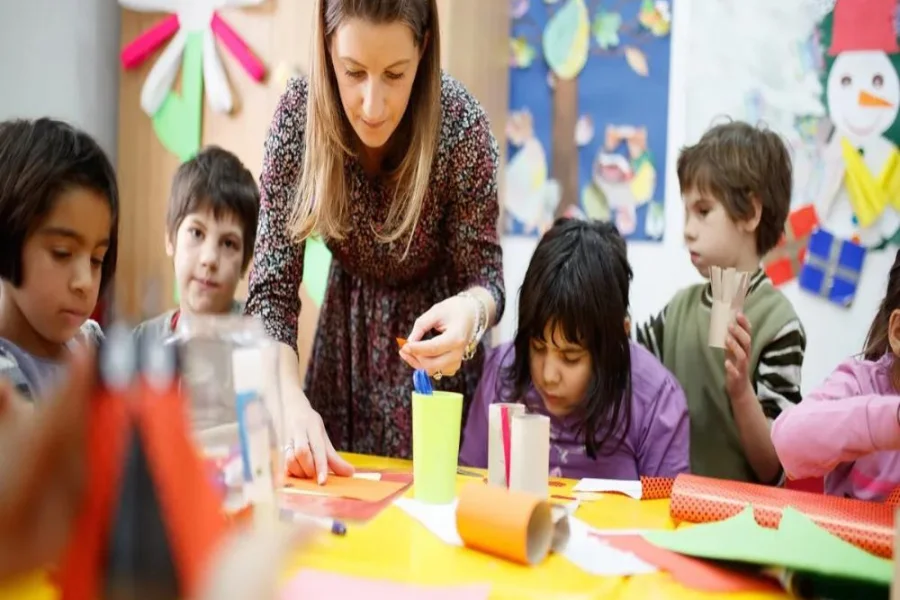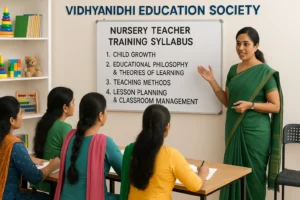
Source: wrightslaw
Nonverbal Learning Disability or non-verbal disorder is a neurological condition that sets in the age of early childhood and which often goes unnoticed till late adulthood. It is a condition that affects the cognitive functioning of the child, especially his visual-spatial skills. A part of the condition also hampers the motor skills of the child in which the child. Children with NVLD also have problems with deciphering facial expressions, due to which their behaviours can appear erratic and unruly, affecting their social interaction skills.
Often NVLD symptoms are neglected due to lack of information or covered under the umbrella term of ASD. To help children with NVLD gain control of their social skills and regulate their motor incapabilities, there is a thorough understanding of NVLD that will ensure that their educational and personal journey is a smooth one, helping them lead wholesome lives.
For more details on the LD Course Call/ Whatsapp at +919321024137 / +919869866277
To download the brochure of the LD Course, Click Here!
How to Test for Nonverbal Learning Disability?
Testing for Nonverbal Learning Disability (NVLD) requires assessing specific cognitive skills for assessing how a kid takes up information beyond verbal communication. Professionals use a variety of methodologies and instruments that evaluate recognition of patterns, reasoning, and spatial skill.
Below are common areas tested when identifying Nonverbal Learning Disability:
Pattern Completion
Students analyze a pattern or design with one missing part. Their task is to identify the missing piece from multiple options. This test calculates perceptual reasoning, attention to detail, and the skill to recognize and complete visual designs.
Reasoning by Analogy
This section involves identifying relationships between figures or shapes. Students must determine the rule that connects the figures and apply it to choose the correct answer. This skill is critical for assessing logical and analytical thinking.
Serial Reasoning
Serial reasoning problems present a series of figures or shapes following a specific progression or rule. Students identify the governing pattern and predict the next figure in the sequence. This section evaluates higher-order thinking and the ability to work with complex relationships.
Spatial Visualization
To create a full figure, students must mentally rotate or combine shapes. This ability examines spatial reasoning and mental form manipulation, both of which are critical for activities requiring problem-solving and visualization.
Every test helps experts better understand the difficulties related to Nonverbal Learning Disability, providing insights into how children study and how best to support them in educational and everyday circumstances.

Source: fulloflifekc
What is the Biggest Problem for Most Students with Nonverbal Learning Disorder?
Kids by nature, especially during their initial years, are extremely affectionate individuals that need the same respect, care, and love from their direct surroundings. As we all know, most of our social skills are derived from observing each other, but in case of children with NVLD this becomes extremely difficult as they fail to decode nonverbal information.
The concept of personal space does not register in their brains due to which they end up asking endless questions that can be frustrating for their peers and teachers. Due to this trait, making new friends is a Herculean task for them. Motor-deficits also hamper their functioning, often leading to disorderly behaviours, which impacts their educational performance and everyday activities.
Key problem areas include:
Complex Reading Comprehension
While students with NVLD frequently shine in decoding written language, they face difficulty in understanding the deeper meaning of texts. They may miss the “big picture,” have difficulty imagining what they read, and find it difficult to make inferences. These issues obstruct their ability to understand and keep critical information, making approaches for improving reading knowledge and inferencing skills important for their success.
Visual-Spatial Organization
NVLD frequently affects the ability to organize and interpret visual-spatial information. This can make it difficult for students to process diagrams, charts, or spatial relationships. Tools like the webbing strategy, which visually breaks down information, can help overcome this challenge.
Chunking
The most important approach that helps students with NVLD is chunking, which means to break down the complicated process into small, manageable steps. This technique can be extremely helpful in subjects of mathematics, geometry and physics where the big complex operation can be simplified into small easy steps. Once the child gains complete understanding of the steps, it becomes easy for them to retain the big process in their minds that helps them to solve bigger, complex math operations. Also chunking helps children to develop systematic orderly thinking that roots deeper into other skills such as problem-solving skills and critical thinking abilities.
By addressing these specific challenges with tailored strategies, students with Nonverbal Learning Disability can better navigate academic tasks and develop skills that support their learning and growth.

Source: blog
What are Academic Interventions for Nonverbal Learning Disorder?
Academic interventions for Nonverbal Learning Disorder (NLD) refer to the thoughtfully curated strategic approaches that directly solve the issues that are the real areas of concern for children with NVLD. Specifically designed strategies help to cater to the essential cognitive functioning areas of problem-solving comprehension and help them develop essential critical skills which are essential to achieve academic excellence.
The SIAS Strategy for Math Word Problems
The SIAS (Sign, Important Information, Arithmetic Problem, and Solution Sentence) strategy helps students systematically break down and solve math word problems.
The steps include:
- Highlight the important words that form the crux of the mathematical operation, helping the child understand what the operation is about. For e.g, to understand whether a certain sum is addition or subtraction, train the child with important words that determine whether it is addition or subtraction.
- Use a highlighter or a marker that captures their attention ensuring that they focus on the important details only.
- Circling the key word(s) to confirm the type of problem.
- Solving the problem step by step and writing a complete solution sentence to reinforce understanding.
Visual Aids and Organizational Tools
Students with NVLD have issues processing visual-spatial information due to which they fail to understand what is important to be taken down in their books. When visual teaching aids are used for such students, it helps them understand what information is important and what is not relevant. This is extremely important for their writing assignments and reading comprehension.
Explicit Teaching of Inference and Comprehension Skills
Since students with Nonverbal Learning Disorder may miss delicate signals or struggle with the “big picture” in texts, clear instruction in inference-making and understanding techniques is important. Teachers can use guided reading sessions to help students practice these skills with direct feedback.
Reinforcement of Sequential Thinking
Consecutive thinking can be challenging for students with NLD, especially in subjects like science and math.
Incorporating the above important interventions in the child’s education plan helps children to build their problem-solving skills and gives a boost to their social interaction skills essential to function in a regular classroom.
These interventions help children build up the desired confidence, training them to be self-dependent, equipping them with a mindset to achieve success and abundance.
How to Study Nonverbal Learning Disability?
Studying Nonverbal Learning Disability requires a structured method to understand the unique difficulties faced by persons with this condition. A well-made Learning Disability Course can provide valuable insights and practical approaches for supporting individuals with Nonverbal Learning Disability.
Here’s how you can approach this subject effectively:
Enroll in a Specialized Learning Disability Course
Programs that concentrate on learning disabilities offer complete information about the features, challenges, and interventions related to Nonverbal Learning Disability. These programs cover important topics like cognitive processing, educational method, and social-emotional support.
Learn Practical Techniques
A Learning Disability Course usually involves practical training on techniques like visual aids, logistic tools, and step-by-step problem-solving methods, which are crucial for understanding the needs of children with Nonverbal Learning Disability.
Selecting a reliable institute to study this subject is important. The Vidhyanidhi Education Society (Govt. Regd.), offers a Learning Disability Course that prepare teachers, parents, and specialists with the skills required to help students with learning challenges, including Nonverbal Learning Disability.
By joining the dedicated course and applying the knowledge gained, you can develop a detailed understanding of Nonverbal Learning Disability and make an important difference in the lives of Students.
Join Vidhyanidhi Education Society’s LD Course today to empower young minds!
For more details on the LD Course Call/Whatsapp at +919321024137 / +919869866277
To download the brochure of the LD Course, Click Here!
FAQs
Are People with Nonverbal Learning Disorder Smart?
People with NVLD are often extremely intelligent with Yes, people with Nonverbal Learning Disorder are intelligent and usually shine at verbal skills, but they may face difficulty in nonverbal tasks.
How to Treat Non-Verbal Learning Disorder?
To address the specific difficulties, treatment may include personalized strategies like visual aids, tools for organization, social skills, and school support.
Can People with NVLD Speak?
Yes, people with NVLD usually have good verbal communication skills and succeed at language-related tasks and logical thinking.



